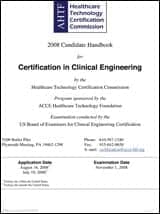by Michael J. Twery, PhD
 |
While mounting evidence suggests that adequate sleep, like nutrition and physical activity, is vital to our well-being, Americans are sleeping less. Chronic sleep deprivation appears to be an increasingly common characteristic of modern American lifestyles linked to a nonstop “24/7” world culture. Nearly one-third of American adults report not getting enough rest or excessive sleepiness on a regular basis. In addition, as many as 70 million Americans may be affected by chronic sleep loss and untreated sleep disorders. For a variety of reasons, many individuals are not diagnosed and not receiving effective treatment. The potential magnitude of the health gap is underscored by a constellation of recent findings associating lifestyles characterized by short sleep duration and some untreated sleep disorders with medically significant outcomes such as obesity, cardiovascular disease, and diabetes.
The National Institutes of Health (NIH) is dedicated to improving human health by funding biomedical research to uncover new knowledge that will help prevent, detect, diagnose, and treat disease and disability. Such advances are largely driven by the creativity, innovation, and dedication of scientists and clinicians working both individually and in cooperative teams. More than 80% of NIH funding is awarded through nearly 50,000 grants to more than 325,000 researchers at over 3,000 universities, medical schools, and other research institutions in every state and around the world. Research initiated by talented investigators or small groups of collaborators accounts for most unanticipated scientific discovery and many of the findings that propel the medical sciences forward. Science-driven research is needed at all stages of discovery (Figure 1) if biomedical research is to be translated into treatments to improve human health and prevent disease.
Sleep and circadian biology present unique challenges for traditional deductive biomedical research paradigms. Although widely recognized as essential for normal function, the full extent of their contribution to health and the role of sleep and circadian abnormalities in disease are not well understood. Basic research can help define biological mechanisms linking sleep, circadian biology, and health. For instance, recent studies of the protein hypocretin have opened new directions to understanding how many neurological functions (feeding, blood pressure, thermoregulation, neuroendocrine regulation) are coordinated with periods of sleep and wakefulness, and how a decline in hypocretin sensitivity with age may explain the tendency of the elderly to fall asleep during the normal waking period. Other studies examine the physiology of sleep and the effects of sleep deprivation. Genomic and proteomic analyses have identified specific patterns of brain gene expression associated with sleep and wakefulness. Sleep deprivation and untreated sleep disorders upset these patterns and lead to abnormalities in the effectiveness of signaling molecules involved in learning, memory, and arousal.
Basic research is also opening new avenues in studying the molecular biology of sleep and circadian function within peripheral organ tissues such as the liver and heart. Recent findings indicate that circadian clock proteins not only impose a daily biological rhythm on peripheral organ function at a molecular level, but also serve as sensors of the cellular environment. In this capacity, circadian clock proteins regulate networks of other genes that are brought into play by specific conditions such as hypoxia and elevated fatty acids. Researchers have demonstrated that disabling circadian clock proteins in mice produces wide-ranging peripheral tissue abnormalities including lipid metabolism, glucose regulation, and the function of muscles such as the cardiomyocyte. Important next steps include identifying disturbances in human peripheral circadian biology and studying their role in the pathogenesis or risk of diseases in the heart, lung, vasculature, blood, and other peripheral tissues. Research is also needed to elucidate the interaction of peripheral clock patterns with centrally mediated sleep and circadian disorders, and the therapeutic strategies that might be used to prevent or treat downstream disease outcomes in peripheral tissues.
A significant remaining challenge is to juxtapose the findings of basic sleep and circadian biology research with the experience of health care providers. Phenotypes based on clinical observation alone can mask opportunities to define disease susceptibility and response to treatment precisely. Integrated models of sleep-related disease mechanisms are needed to facilitate the process of clinical investigation. The National Heart, Lung, and Blood Institute (NHLBI)?Sleep Heart Health Study and other groups have objectively assessed sleep in large groups of individuals to assess whether specific sleep abnormalities are associated with suspected risks to health and factors that influence this relationship (epidemiology). New models for epidemiological research will integrat
e basic epidemiological findings with other biomedical characteristics such as genetics, genomics, proteomics, and meta-bolomics to develop better predictive models of disease risk and susceptibility. A wide-range of large-scale, high-throughput, shared data resource development projects have been initiated by the NIH to facilitate integrative approaches, gene discovery, gene resequencing, and the elucidation of gene-environment interactions. As new shared data resources and services come online in the near future, a new tier of research opportunities will follow in which well-prepared sleep and circadian investigators can stimulate novel interdisciplinary studies. For instance, lifestyles associated with chronic sleep disturbances are associated with obesity. Clinical research has implicated short sleep duration and sleep disturbance with biological abnormalities in metabolism and appetite regulation that are obesity risk factors. Studies are still needed to assess the association of sleep disturbance with physical activity, psychosocial stress, and other health-related lifestyle factors affecting the risk of obesity and other medically significant outcomes.
 |
| Figure 1: Stages of discovery for science-driven research. |
Quantitatively determining whether the relationship of disease to sleep and circadian abnormalities can be modified by treatment or preventive measures (clinical trials) is a critical step needed to translate biomedical research discoveries into clinical practice and improved health. While recent epidemiological findings associate sleep disturbances with clinically relevant outcomes, relatively few controlled, prospective intervention studies have been conducted to assess the benefits of treatment for any sleep disorder on outcomes such as cardiovascular disease, autonomic dysfunction, immunological function, and indicators of health-related quality of life. Efficacy trials are designed to determine whether an intervention can work under ideal circumstances and whether the intervention has any effect at all. The selection of appropriate controls and standards against which the effects of an intervention can be evaluated is complicated by factors such as individual variation in sleep preference, sleep need, and sleep-disorder etiology. After the efficacy of a sleep-disorder treatment has been established in a controlled setting, the effectiveness of the intervention in real world conditions can be investigated. For instance, an effectiveness trial might demonstrate whether the incidence of hypertension is reduced if sleep-disorder management were added to the usual care of pre-hypertensive patients. Demonstration and dissemination research projects translate proven therapies into educational strategies, behavioral techniques, environmental changes, health care services, and evidence-based guidelines to improve the prevention or management of sleep disorders and promote healthful lifestyles. Generally speaking, the design, implementation, and interpretation of clinical trials have become a domain of research specialization best suited to a team of investigators. Sleep and circadian researchers collaborating with experienced clinical trialists, quantitative behavioral scientists, statisticians, data managers, and clinical outcome specialists may be in the best position to develop clinical trial grant applications needed to be competitive for NIH funding.
The National Center on Sleep Disorders Research (NCSDR), an office of the NHLBI, monitors the status of sleep and circadian grant applications received NIH-wide. These analyses indicate that over the period of 1996 to 2006, the number of grant applications focused on sleep and circadian biology research of all types has nearly doubled, but remains relatively small compared to the magnitude of potential research opportunities. Investigator-initiated clinical trials designed to acquire, validate, or transfer knowledge related to treatment are almost nonexistent for all types of sleep and circadian disorders combined. In fiscal year 2006, grants awarded by NIH for sleep disorders research amounted to $199 million out of an annual NIH appropriation budget of $28 billion. With few exceptions, the level of NIH funding within a particular disease category such as sleep disorders closely reflects the number of grant applications submitted, the type of research, and the merit ranking of applications in the NIH peer review process. Success rates for sleep and circadian grant applications over the last decade have remained generally parallel to that of the NIH average. Although the reasons for the relatively slow expansion of sleep and circadian research are unclear, a number of funding opportunities are continuously available from the NIH for research training at all levels of career development. In order to stimulate research by physician-scientists, the NIH offers career development awards. A mounting cascade of scientific findings and technological advances is also opening new opportunities for sleep and circadian investigators. High-resolution studies of gene expression and function facilitated by a sophisticated understanding of the organization imposed by sleep and circadian biology are a relatively unstudied domain of systems biology. Sleep and circadian biologists could also have an important role stimulating new integrative approaches to studying health and disease through multidisciplinary collaboration with organs, system, or disease-centric investigators. Whatever the direction, it will be the contribution of community members individually or in self-organized teams that will determine the pace at which future biomedical research advances the domains of sleep and circadian biology. Dissecting the roles of sleep and circadian biology in health and disease is a momentous undertaking to be pursued in partnership with NIH programs and resources.
Patient information on sleep disorders is freely available for viewing and dissemination from the NHLBI Web site (www.nhlbi.nih.gov/health/public/sleep ). Professionals with questions about research and funding opportunities related to sleep and circadian biology can contact the NCSDR or any of the staff representing the sleep research programs of specific NIH Institutes (see www.nhlbi.nih.gov/sleep, under “communication”).
General Review Criteria for NIH Grant Applications
- Significance. Does this study address an important problem? If the aims of the application are achieved, how will scientific knowledge or clinical practice be advanced? What will be the effect of these studies on the concepts, methods, technologies, treatments, services, or preventive measures that drive this field?
- Approach. Are the conceptual or clinical framework, design, methods, and analyses adequately developed, well-integrated, well-reasoned, and appropriate to the aims of the project? Does the applicant acknowledge potential problem areas and consider alternative tactics? Have investigator roles and responsibilities been designated, and is governance and organizational structure consistent with and justified by the aims of the project and the expertise of the investigators?
- Innovation. Is the project original and innovative? For example, does the project challenge existing paradigms or clinical practice? Does it address an innovative hypothesis or critical barrier to progress in the field? Does the project develop or employ novel concepts, approaches, methodologies, tools, or technologies for this area?
- Investigators. Are the investigators and other key personnel appropriately trained and well suited to carry out this work? Does the investigative team bring complementary and integrated expertise to the project?
- Environment. Does the scientific environment in which the work will be done contribute to the probability of success? Do the proposed studies benefit from unique features of the scientific environment, or subject populations, or employ useful collaborative arrangements? Is there evidence of institutional support?
Source: National Institutes of Health (grants.nih.gov/grants/grant_basics.htm)
Michael J. Twery, PhD, is a health scientist administrator in the National Heart, Lung, and Blood Institute, NIH. He has led the sleep and respiratory neurobiology scientific research group since 1996, and has been serving as director of the National Center on Sleep Disorders Research in the Division of Lung Diseases since January 2006. Twery can be reached at [email protected].




